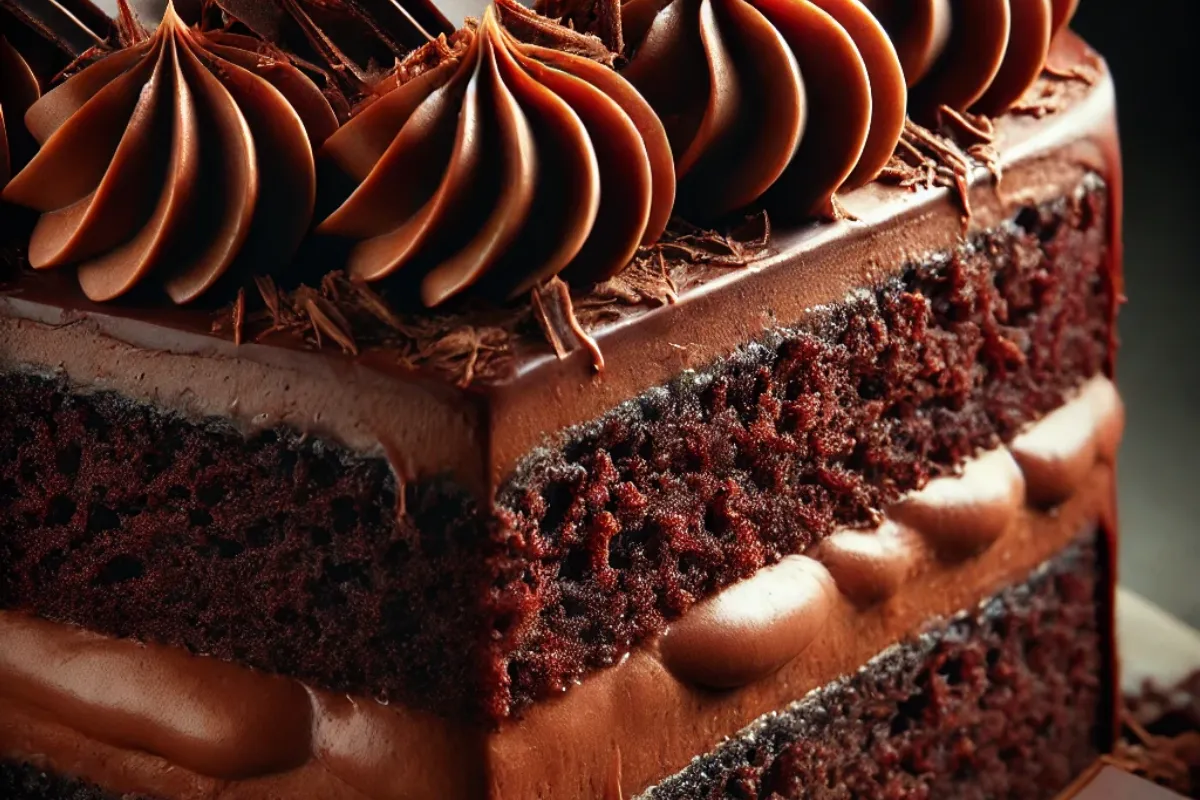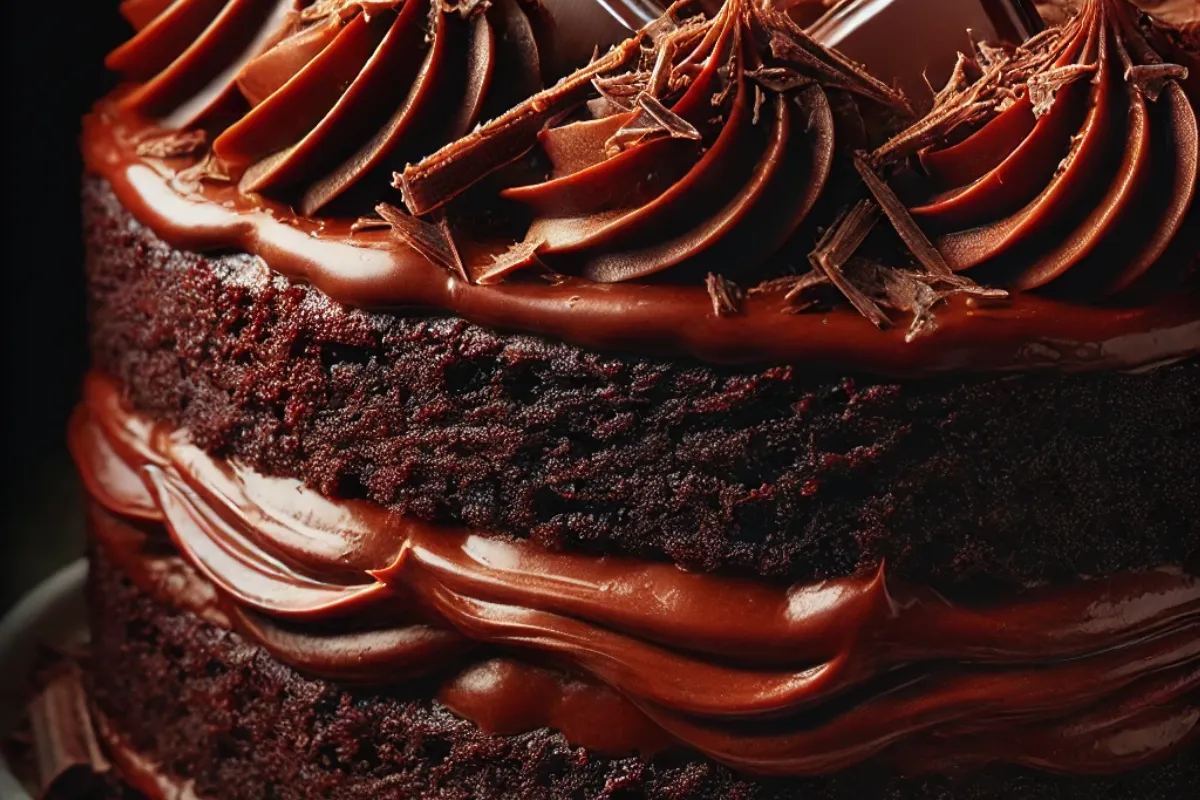Every cake, no matter how simple or complex, is built on a foundation of key ingredients. Understanding the role of each ingredient will not only improve your baking skills but will also allow you to customize recipes and troubleshoot potential issues. In this guide, we’ll dive into the main ingredients in a cake and how they work together to create that perfect baked treat.
1. Flour: The Structural Base
Flour is arguably the most essential ingredient in a cake. It provides the structure that holds the cake together. The protein in flour, when mixed with liquid, forms gluten, which traps air and helps the cake rise.
Types of Flour:
- All-Purpose Flour: This is the most common flour used in baking. It has a moderate amount of protein, which provides a good balance of structure and tenderness.
- Cake Flour: Lower in protein than all-purpose flour, cake flour is finer and softer, resulting in a lighter, more tender cake.
For more insights on how to select the right flour for cakes, check out this helpful guide on Flour Selection for Baking from King Arthur Baking.
2. Sugar: Sweetness and Moisture
Sugar does more than just sweeten your cake. It also helps to tenderize the batter by preventing the flour proteins from bonding too tightly. Additionally, sugar helps retain moisture, giving the cake a soft texture.
Types of Sugar:
- Granulated Sugar: The most commonly used sugar in cakes, it dissolves easily and creates a fine crumb.
- Brown Sugar: Adds a deeper, more caramel-like flavor and extra moisture to cakes.
Check out Philadelphia Cheesecake Recipe for how sugar plays a role in both structure and sweetness.
3. Eggs: Binding and Leavening
Eggs are another crucial ingredient in cake baking. They provide structure and stability to the cake batter, and they also act as a binder, holding the ingredients together. Eggs add richness and moisture while helping the cake rise.
How Eggs Work:
- Egg Whites: Act as a leavening agent when beaten, trapping air and helping the cake rise.
- Egg Yolks: Contribute fat and moisture, making the cake rich and tender.
The balance between egg whites and yolks can significantly affect the final texture of your cake. For more information on how to use eggs in baking, check out this article on The Science of Baking with Eggs.
4. Fat: Richness and Tenderness
Fat adds moisture, richness, and tenderness to a cake. Without fat, cakes would be dry and crumbly. Fat also helps trap air bubbles during the mixing process, which contributes to the cake’s rise and lightness.
Types of Fats:
- Butter: Adds flavor, moisture, and richness. Creaming butter with sugar creates a light, fluffy texture.
- Oil: Makes for a moist cake but with a different texture than butter. Oil-based cakes tend to stay moist longer.
Learn more about how butter and oil can impact cake texture in this comparison guide from Bon Appétit.
5. Leavening Agents: Lightness and Rise
Leavening agents like baking powder and baking soda are responsible for making cakes rise. They release gases when combined with wet ingredients or heat, creating air bubbles that make the cake fluffy.
Types of Leavening Agents:
- Baking Powder: A combination of an acid and a base, it activates when mixed with liquid and heat.
- Baking Soda: Works with an acidic ingredient (like yogurt or vinegar) to produce gas and help the cake rise.
For more details on the science behind leavening agents, check out this article on Baking Powder vs. Baking Soda.
6. Liquid: Moisture and Texture
Liquids like milk, water, or buttermilk help moisten the batter and activate the leavening agents. Liquids also help dissolve the sugar and hydrate the flour proteins, which aids in gluten formation.
Types of Liquids:
- Milk: Adds moisture and richness, and its proteins contribute to the structure.
- Buttermilk: Adds a tangy flavor and works well with baking soda as an acidic ingredient to help the cake rise.
For more on how buttermilk affects the texture of cakes, check out this helpful guide on Buttermilk in Baking.
7. Flavorings: Enhancing Taste
While the basic ingredients build the cake’s structure, flavorings like vanilla extract, cocoa powder, citrus zest, or spices elevate the taste.
Popular Flavorings:
- Vanilla Extract: A staple in most cakes, it enhances the overall flavor.
- Cocoa Powder: Essential for chocolate cakes, it adds richness and depth.
- Spices: Cinnamon, nutmeg, and ginger are commonly used in spiced cakes.
To explore unique flavor combinations, check out this article on Best Cake Flavor Pairings.
Advanced Techniques for Enhancing Cake Quality
Once you’ve mastered the basics of cake ingredients, you can explore advanced methods to further improve your baking and create cakes that stand out.

1. Layering Flavors
Combining complementary flavors in the batter, filling, or frosting can elevate a cake from good to exceptional.
- Infused Liquids: Replace water or milk in your recipe with infused liquids like herbal teas, coffee, or fruit juices. For example, use espresso in chocolate cake for a mocha flavor.
- Flavored Extracts: Beyond vanilla, try almond, coconut, or orange extracts to add complexity.
- Spice Blends: Experiment with unique spice combinations, like chai spices or pumpkin pie spice, for seasonal cakes.
Pro Tip: Balance is key when layering flavors. Use subtle enhancements to complement the main flavor without overpowering it.
2. Incorporating Add-Ins
Add-ins like nuts, fruits, or chocolate chips can bring texture and bursts of flavor to your cake.
- Fresh or Dried Fruits: Blueberries, raspberries, or chopped dried apricots add natural sweetness and moisture.
- Nuts: Walnuts, pecans, or almonds introduce crunch and nutty richness.
- Chocolate Chips: Use dark, milk, or white chocolate chips for an indulgent touch.
Pro Tip: Lightly coat add-ins with flour before folding them into the batter to prevent them from sinking to the bottom of the cake.
3. Customizing Texture with Alternative Ingredients
Exploring alternative ingredients can yield unique textures and cater to dietary needs.
- Greek Yogurt or Sour Cream: Replacing part of the liquid with Greek yogurt or sour cream adds tanginess and extra moisture.
- Gluten-Free Flours: Almond flour, rice flour, or a gluten-free baking mix can replace wheat flour for a gluten-free option. Use xanthan gum to improve structure.
- Plant-Based Alternatives: Substitute eggs with flaxseed meal or chia seeds mixed with water, and replace dairy with almond or oat milk for vegan cakes.
Pro Tip: When using alternative ingredients, start with small substitutions to understand their impact on texture and flavor.
4. Enhancing Moisture and Shelf Life
A moist cake is always a crowd-pleaser, and ensuring longevity helps when preparing cakes in advance.
- Simple Syrup: Brush layers with a sugar-water syrup (or flavored syrups) before stacking and frosting to retain moisture.
- Oil-Based Recipes: Cakes made with oil instead of butter tend to stay moist longer and are more resistant to drying out.
- Proper Storage: Wrap cakes tightly in plastic wrap and store in an airtight container to maintain freshness.
Pro Tip: Store frosted cakes in the refrigerator, but allow them to come to room temperature before serving to enhance their flavor and texture.
5. Perfecting Cake Frosting and Decoration
An impeccably frosted and decorated cake enhances the overall experience.
- Crumb Coating: Apply a thin layer of frosting to seal in crumbs before adding the final layer for a smooth finish.
- Piping Designs: Practice simple piping techniques like rosettes or borders to add elegance.
- Edible Decorations: Use sprinkles, edible flowers, or fresh fruits for visual appeal.
Pro Tip: For a modern look, try a “naked cake” with minimal frosting that lets the cake layers peek through.
Exploring Additional Ingredients and Techniques
Beyond the foundational ingredients, other elements can enhance a cake’s flavor and structure, giving you more flexibility to create unique desserts.
1. Stabilizers and Improvers
Adding stabilizers like cream of tartar or natural thickeners, such as cornstarch, can improve your cake’s texture and height. Stabilizers work well in conjunction with egg whites for recipes that require meringue bases. Explore more techniques for achieving perfect textures in desserts through Perfect Icing on Cake.
2. Specialty Flavorings
Expanding your flavor profile with ingredients like rose water, almond extract, or cardamom can transform a simple recipe into a gourmet delight. For seasonal inspirations, try infusing pumpkin or cinnamon into your batter, as demonstrated in Pumpkin Bread Truffles.
Pairing Cakes with Frostings
Understanding how the flavors and textures of icing complement cakes ensures a balanced dessert.
- Buttercream works seamlessly with spongy cakes for weddings or formal gatherings.
- Cream cheese frosting, known for its tanginess, is a staple for red velvet and carrot cakes.
Explore how pairing the right frosting transforms cake presentation through Best Cheesecake Recipe Secrets.
Mastering Techniques for Beginner Bakers
For those new to baking, troubleshooting common cake mishaps is essential:
- Avoid overmixing the batter; this prevents dense, chewy cakes.
- Leverage a water bath technique to ensure even baking, similar to methods used in cheesecakes. Learn more with New York vs. Philadelphia Cheesecake Key Differences.
For creative spins on standard recipes, try incorporating ideas from Halloween Birthday Cake Ideas.
Troubleshooting Common Cake Issues
Even seasoned bakers encounter challenges. Here are some solutions to common cake problems:
- Dense Cake: This may result from overmixing the batter or using too little leavening agent. Mix just until combined and double-check your measurements.
- Sinking in the Middle: Often caused by underbaking or overmixing. Use an oven thermometer to ensure accurate temperature and avoid opening the oven door too early.
- Dry Texture: Prevent dryness by measuring flour correctly (spoon it into the measuring cup, then level it off) and avoiding overbaking.
- Uneven Layers: Use a serrated knife to level layers before stacking and frosting for a professional finish.
Pro Tip: To test for doneness, insert a toothpick into the center of the cake. If it comes out clean or with a few crumbs, your cake is ready.
Expanding Your Cake-Baking Repertoire
Once you’ve mastered the fundamentals, try your hand at unique cake styles and techniques:
- Layered Cakes: Experiment with different fillings, such as ganache, fruit preserves, or flavored whipped cream, between layers.
- Roll Cakes: Master the art of rolling sponge cakes for stunning Swiss rolls or Yule logs.
- Savory Cakes: Explore savory options like cornbread cakes or cheese-based bakes for an unconventional twist.
Pro Tip: For layered cakes, use a cake board and dowels to stabilize tall creations and ensure they remain intact during assembly.
FAQs for Main Ingredients in a Cake
What happens if I skip a key ingredient like eggs?
Eggs are essential for structure and moisture. Skipping them will make the cake dense and dry. You can use egg substitutes, but the texture may change.
Can I substitute oil for butter in a cake recipe?
Yes, you can substitute oil for butter, but it will affect the texture. Oil produces a moister cake, while butter gives a richer flavor and fluffier texture.
What is the difference between baking soda and baking powder?
Baking soda requires an acidic ingredient to activate, while baking powder already contains both an acid and a base. They’re not interchangeable without adjusting the recipe.
How does sugar affect the texture of a cake?
Sugar tenderizes the cake by weakening the flour proteins. It also helps retain moisture, giving the cake a soft texture.
Conclusion
The main ingredients in a cake—flour, sugar, eggs, fat, leavening agents, liquid, and flavorings—each play a crucial role in the final product. Understanding how they work together allows you to troubleshoot recipes, make substitutions, and create cakes that are perfectly balanced in flavor, texture, and rise. By mastering these basic ingredients, you can take your cake baking skills to the next level. For more inspiration on cake ingredients and techniques, explore the New York vs. Philadelphia Cheesecake Differences for insights into balancing flavors and textures.


5 thoughts on “What Are the Main Ingredients in a Cake?”